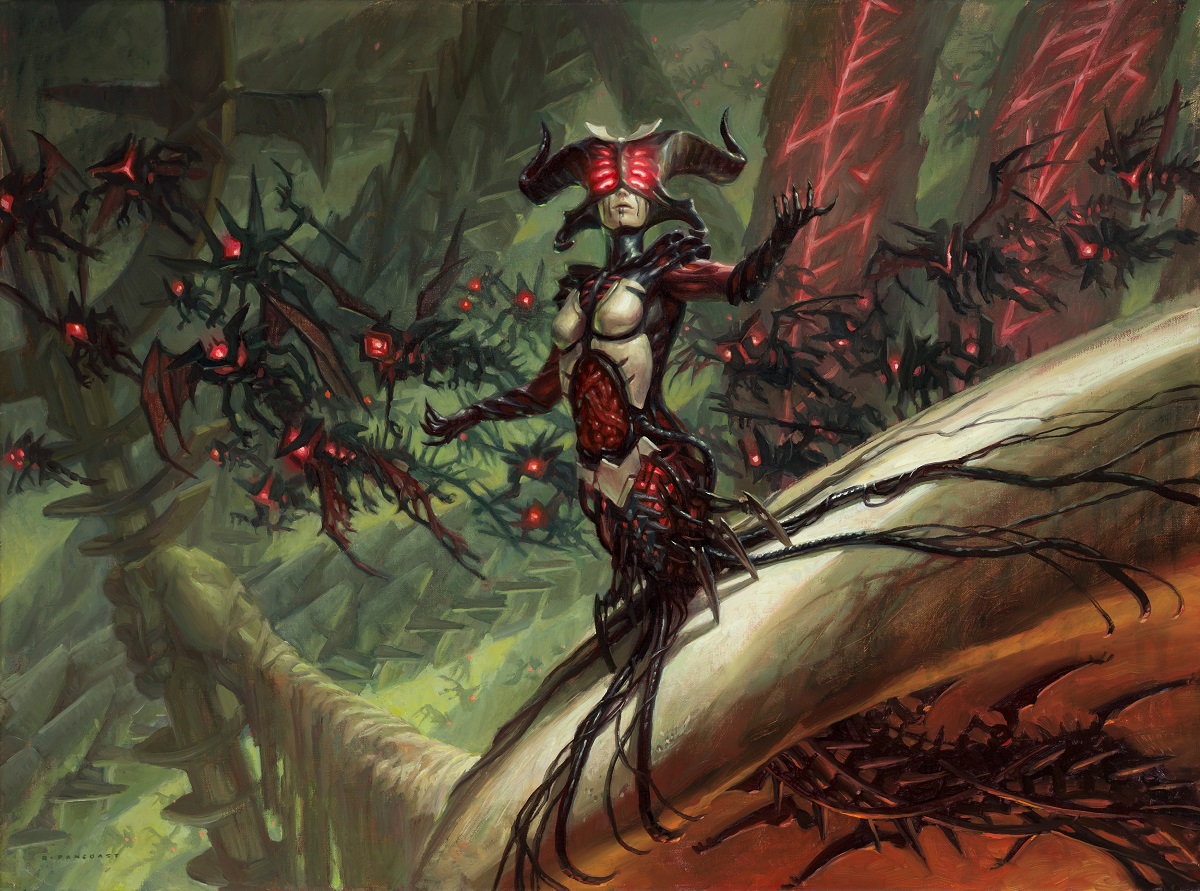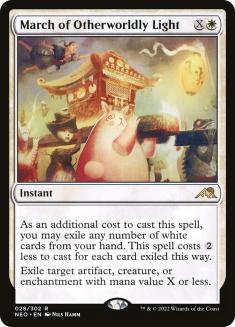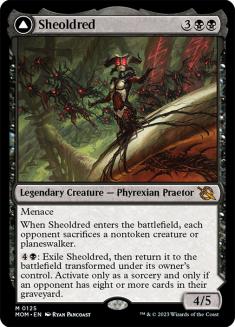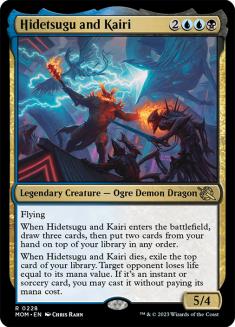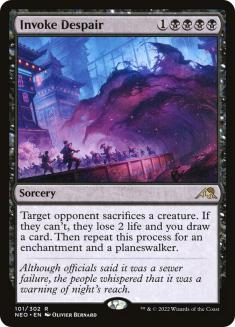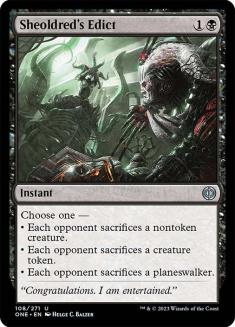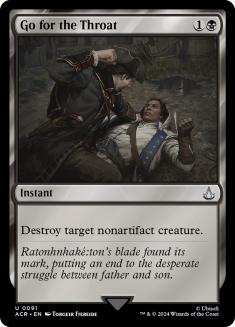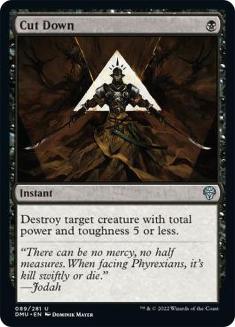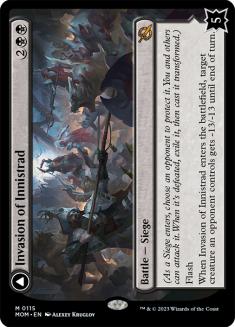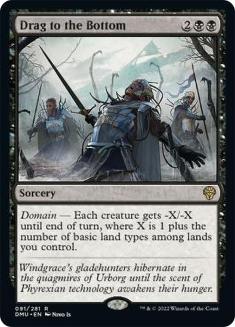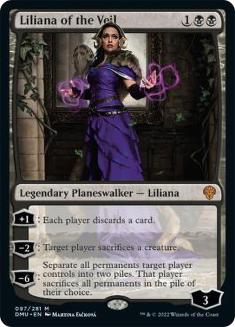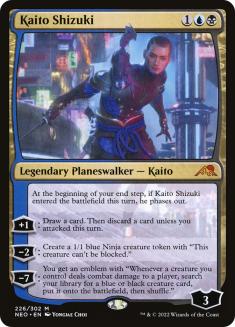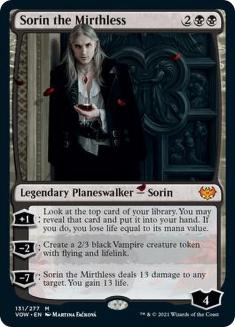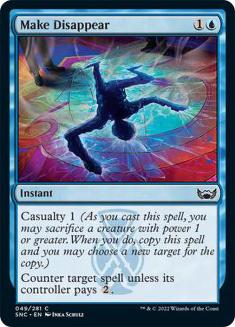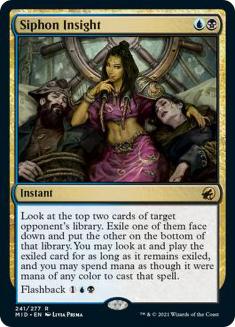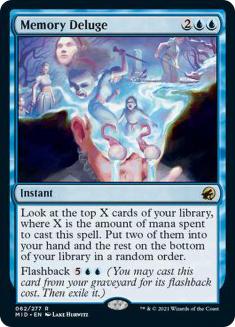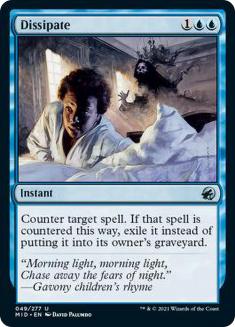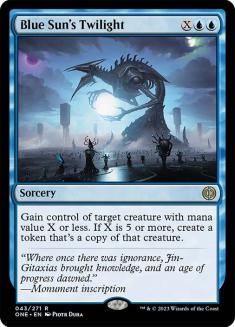March of the Machine has opened many possibilities for control enthusiasts in Standard. I have defaulted to Azorius Control these days; however, the top cards from the new set have pushed me into the welcoming arms of Dimir. I have always been a fan of joining the houses in holy Esper Control matrimony, and that future does not seem too far off. The mana is close to being there, except it is tough to take the plunge when both decks have the tools needed to take care of business.
Safety or Power?
Azorius Control is the safer play, with disruption that can handle any permanent that lands on the battlefield. The white-based removal is top-notch, easily taking care of threats that have been historically hard to deal with when playing control. March of Otherworldly Light is still saving control users in Standard, even though it has lost its starting role in the older formats. That does not mean it is weak; instead, it is a testament to how good the newer removal spells are.
By moving away from the safer, white-based control, we are able to tap into the increased power level of Dimir Control. Removal spells may have more reach in Azorius Control, but the Dimir Control options are more mana-efficient. Each variation has a one-cost removal spell; however, there are more supplemental options in black. In addition, the best control win condition from March of the Machine is in this guild, and I have a difficult time not giving it a shot in the inaugural competitive play. The win conditions for control have been shaky at best recently, and we were given a strong one to lead the Dimir guild to the promised land.
Creatures (3)
Planeswalkers (5)
Lands (27)
Spells (25)
- 3 Dissipate
- 2 Go for the Throat
- 2 Siphon Insight
- 3 Memory Deluge
- 3 Invoke Despair
- 4 Make Disappear
- 1 Cut Down
- 3 Drag to the Bottom
- 3 Sheoldred's Edict
- 1 Invasion of Innistrad
Sideboard

Sheoldred
In my last article, I discussed my favorite control cards from March of the Machine, many of which were earmarked for white-based control. Sheoldred had my vote for the most impactful of the bunch, but it did not shine the most during playtesting. It has been very good, especially against the best decks of the format that regularly tap out for haymakers. Against the very aggressive decks, it is difficult to support more five-drop win conditions. In other words, another five-drop creature has beat out Sheoldred for my favorite win condition from the new set.
Hidetsugu and Kairi
Hidetsugu and Kairi has been an absolute knockout for me in this deck. I had it on my list as number five, but I acknowledged that it better fit the midrange strategy in Standard. For me, it has been an easy tap-out target on Turn 5 every game. The disruption that Dimir Control launches prior to its arrival makes the battlefield relatively clear. This allows Hidetsugu and Kairi to be an effective blocker, with enough removal protection to remove any liability.
The traditional protection stats are not on Hidetsugu and Kairi. It instead casts Brainstorm on its arrival, an effect that I welcome into my Standard control deck with open arms. Using Memory Deluge and Takenuma, Abandoned Mire, I have even replicated the older-format feel that Brainstorm used to give me. Hidetsugu and Kairi’s evasive, large-bodied win condition and card replacement are enough to make it a formidable foe in most matchups. The final ability is what puts it over the edge for this Dimir Control deck.
When Hidetsugu and Kairi dies, it exiles the top card of the library, hurting the opponent based on the mana value, and casts it for free. It must be an instant or sorcery, which is quite the limitation for this Standard format. I thought about getting cute with some expensive sorceries, but there is only one that I am interested in casting.
Invoke Despair
Invoke Despair is the premier black sorcery that all the kids are playing these days. In Dimir Control, it is a great answer-all to problematic permanents that have landed on the battlefield. If there are no targets, it will draw the user a bunch of cards and force the opponent to lose more life. The life loss from Hidetsugu and Kairi dying, added to the effect of Invoke Despair, can drop the opponent to half. With the help of Memory Deluge and playing three copies of each, this two-card combo happens with great consistency. Even with Invoke Despair is not in the picture, I have used the death of my Hidetsugu and Kairi to get rid of an unneeded card.
Early-Game Removal
The rest of this Dimir Control deck utilizes the most powerful options at our disposal in Standard. The removal is a bit more restrictive than our white-based counterparts, but still quite good. Cut Down, Go for the Throat, and Sheoldred’s Edict hold down the fort in the early-game. These removal spells rarely are dead, finding a target in most matchups.
I am very high on Sheoldred’s Edict, since it gives control the power to take out planeswalkers for only two mana. Go for the Throat is nearly a universal removal spell in Standard, while Cut Down is narrower at one mana. With my current list, it is likely that I will eventually add a second Cut Down to the main, instead of relying on sideboarded games to bring down the curve. It depends on the popularity of Thalia and The Gitrog Monster, since the other removal spells are much stronger against midrange.
Invasion of Innistrad
To assist the early-game removal, I have added a copy of Invasion of Innistrad. I love this removal spell and would play a second copy if I had more ways to win a battle in this deck. To get the bonus effect, I rely on the creatures left over by my planeswalkers or a swing from Hidetsugu and Kairi. This is more difficult to accomplish in a true control deck, although it happens frequently enough to make Invasion of Innistrad a strong singleton in the deck.
Drag to the Bottom
The backbone removal spell of Dimir Control is a sweeper, and it shaped the way I created the manabase. Drag to the Bottom is a phenomenal sweeper that takes out nearly every creature in the metagame, regardless of which stage of the game we are in. With the assistance of Xander’s Lounge and Raffine’s Tower, it can conquer even the mightiest foes for just four mana. I am only playing three in the maindeck, but I can easily see this become a four-of staple in the appropriate metagame. Drag to the Bottom, with the aforementioned removal spells, creates a safety net for Dimir Control to safely summon its win conditions.
Planeswalkers
Liliana of the Veil, Kaito Shizuki, and Sorin the Mirthless are the planeswalkers of Dimir Control. I am still a huge fan of Liliana of the Veil in any deck with Swamps, as the planeswalker has aged well in the power level creep era. It still can end games if protected well, especially if it took out a threat upon its arrival. Often, it will kill something, and opponents will spend resources to remove it. When this series begins on Turn 3, the control player is going to win in this exchange. Very few decks are excited to see it resolve on an empty (or near-empty) battlefield for a reason.
Kaito Shizuki and Sorin the Mirthless add creatures to the battlefield for Dimir Control, while also producing card advantage. I consider planeswalkers that draw cards and make creatures friends of mine. I would be playing more copies of these, but the Hidetsugu and Kairi package requires some sacrifices during deckbuilding. In a perfect world, I would play four copies of this creature and take full advantage of some expensive sorceries and instants out there. Since the power level of those are down, and planeswalkers are up, everyone gets to play on the team.
Blue
The majority of the deck is black, but there are also some strong blue elements. Make Disappear is the new counterspell hotness. It has a creature sacrifice stipulation, though that’s not necessary to effectively use it. Countering unless the opponent pays two mana is a fine deterrent in the early-game. The most threatening spells begin on Turn 3, which is why Make Disappear is such a good card.
Also, at the two-mana slot, I have been reunited with Siphon Insight. I still primarily use this to hit land drops, which it is pretty good at doing. When land is not needed, the powerful spells of the opponent have come in handy for the Dimir Control plan. It is the strongest early-game card draw spell we have access to, and it performs admirably.
The best blue card in the deck is still Memory Deluge. No control deck is complete without it, even in the older formats. It provides a strong card draw spell on its first use, while giving us Dig Through Time on the second.
While Memory Deluge provides me great happiness, the weakest blue card in the deck does not. Dissipate joins Dimir Control as the three-cost disruption spell that no one wants to play. The harsh reality of Standard hits me every time during deckbuilding, where I have to determine which Cancel gets to join the team. The rest of the deck is a blast, so I can forgive Dissipate for being the necessary evil control decks must include.
Sideboard
The sideboard is still a work in progress. I know I want the fourth Drag to the Bottom, two copies of Sheoldred, some amount of Negates, and some amount of Duress. The Disdainful Stroke, Blue Sun’s Twilight, and fourth Memory Deluge are for the midrange decks that plague the top tables of Standard.
I like every card in the sideboard, although it is too early in the metagame to make an official call. As the format solidifies, these numbers will change to address it. Having enough replacement cards for dead removal and being able to lower the curve against aggressive decks are the two goals of an effective sideboard in Standard.
I will update you all as I change the deck, and I hope you have as much fun with this deck as I have had!

